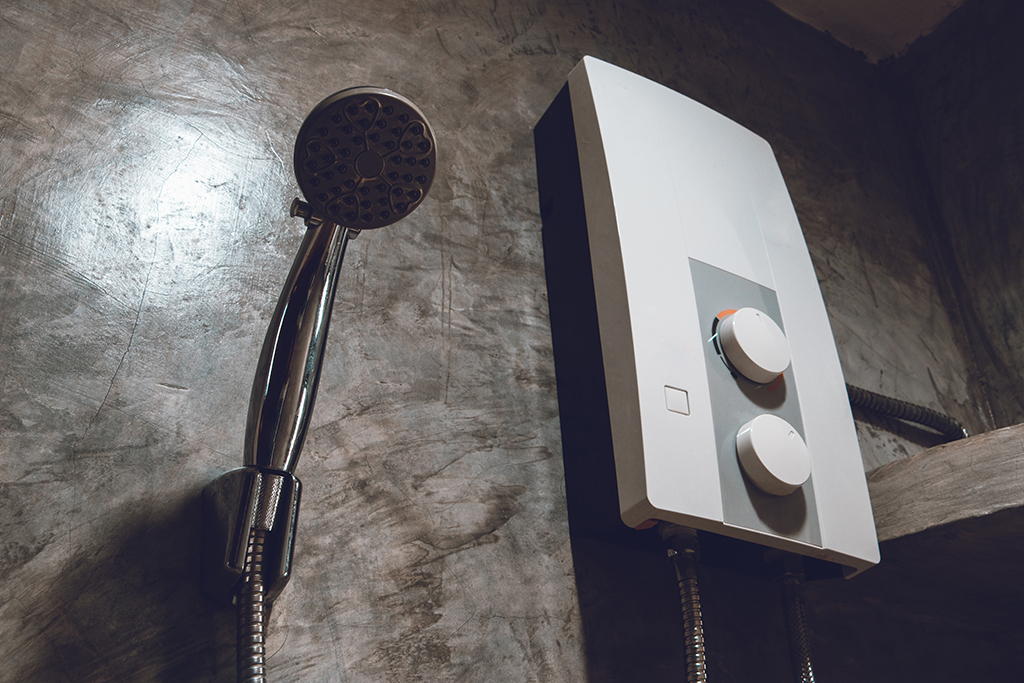
Choosing the Best Tankless Water Heater for the Job | San Antonio, TX
Photo By neotemlpars at Shutterstock
If you’re like many residents of San Antonio, you are careful to conserve water when you can. Tankless water heaters can help lower monthly water usage. With this, you can reap the benefits of being more environmentally conscious as well as earn the coveted lifeline discount on your water bill. Tankless systems work on demand; when you turn the hot water faucet on the water passes through a heating unit that is typically installed near your main point of use. Not only does this save you the time you would spend waiting for hot water to travel from a large water tank to your location, it also saves gallons of water that is usually wasted because it hasn’t reached a usable temperature. But before you convert your old hot water tank to a new on-demand heater, make sure that your choice matches your water usage needs and household resources.
Making the Switch to Tankless Water Heaters
If you’re part of a large family that uses hot water on a daily basis to shower, launder clothes and clean (often simultaneously), you may consider staying with a 40-gallon hot water tank that can meet a larger demand. Otherwise, a tankless system will do just fine in meeting your family’s water needs.
Switching from a tank to an on-demand system is generally straightforward, unless you have to retrofit your plumbing or electric to fit the new system. This usually occurs when your house is using an older heating/cooling system, in which case an upgrade may be just the thing you need to improve your comfort level and overall heating/cooling costs.
Choosing the Best Tankless Water Heater
Living in San Antonio, TX can save you the financial burden of large heating bills during winter months, but if you are paying a fortune on your water bill, you aren’t reaping the benefits of your geography. You can improve your advantage by choosing tankless water heaters that are just right for your needs. This requires an honest appraisal of what you need and what is available.
When looking at tankless water heaters, you’ll find information in the specifications that can provide valuable information to help you determine whether that unit will work for your family. These terms include the following categories:
Fuel source: This reveals the power source of a tankless water heater. Most systems use liquid propane, natural gas or electric. Each source has its advantages and limitations, so your decision will likely be based on a number of factors, including the installation cost of the system that you like the most, including whatever cost is involved in reconfiguring your plumbing or electrical system if necessary.
Flow Rate: This is the number you’ll use to compute whether you can get by with using one tankless heating unit or if you might need to purchase multiple units and install them in series. The flow rate is measured in gallons per minute (GPM). Some of the most common ranges for flow rate include the following:
- Washing Machine: 2.0-2.5 GPM
- Dishwasher 0.5-1.00 GPM
- Bath Tub 2.5-3.00 GPM
- Shower 1.5-2.5 GPM
- Kitchen Sink: 1.5-2.0 GPM
The normal range of flow rates allowed by major brands of tankless water heaters is 4-12GPM, which includes all of the devices you might run simultaneously. For example, if you expect that you’ll have the dishwasher running while the kids get their evening shower, you’ll add the values for the shower (max 2.5) and dishwasher (max 1) together for a total of 3.5 GPM. Once you’ve determined your required flow rate, it becomes a simple matching process to find the water heater that fit your needs.
BTU: This is a unit of measure in gas volume that stands for British Thermal Unit. It is commonly used to quantify the heating power of your tankless gas water heater. Units with higher BTUs usually also have higher flow ratings, which can be beneficial if your water needs usually rise during certain times of the year. However, on-demand heaters that require a higher BTU could also require you to change the size of your current gas lines to meet the demand.
To Stay with Tradition or Grow into the Future
The tankless water heater is one more innovation that can make a difference for those San Antonio, TX residents willing to make the leap to a more environmentally-friendly and efficient method of getting hot water for their household needs. As with any major change, the idea of discarding the old hot water tank in favor of a small wall attachment may be counter-intuitive and intimidating, but the benefits of the on-demand water heater are indisputable:
On-Demand heaters use less space than tanks, leaving you with more decorating options and more square footage to expand your kitchen or bathroom.
Tankless water heaters provide an indefinite source of hot water as long as you use the flow-rate that your unit is rated to provide, which means you can finally take that long, hot shower you’ve always wanted
On-demand units are much more efficient than standard tank heaters, with many newer units measured at 92-93% efficient compared to just over 50% for tank units.
New tankless systems have a longer lifespan than hot water tanks. While the standard usage anticipated from a tanked water heater is 8-12 years, tankless versions can easily make it more than twenty years.
On-demand heaters encourage environmentally-conscious water usage habits. They typically have a slower flow-rate than traditional tank heaters and the water heats up more quickly, so you don’t waste as much while you’re waiting for the water to reach temperature.
The Tankless Trend for Young Homeowners
The traditional hot water tank has been a staple in the homes of millions of San Antonio residents for more than half a century. In this time, these storage containers have met the needs of families and organizations alike. The advent of the tankless systems provides us with a new option for heating our water, and while it was never intended to replace the tank systems, younger homeowners who live in a time of environmental awareness have embraced the tankless water heater as a necessary evolution in how we look at and use our home plumbing system.











